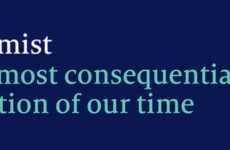
The 'How Does the American Public Rate News Media' Chart is Distrustful
Jennifer Gosnell — June 13, 2012 — Pop Culture
References: holykaw.alltop & awesome.good.is
The 'How Does the American Public Rate News Media' infographic displays a weakness in one of the most fundamental assets of news organizations: trust. News is only effective so long as people believe what is being reported. For starters, an overall increase has occurred in the widely held beliefs that powerful people manipulate what is being reported, articles are biased, and often the news can be inaccurate.
From 1985 to 2011 an increase from 23 percent to 42 percent of people believe that the way that news is being reported is actually hurtful to democracy and "too critical of America". However, when you break down whose beliefs these are mostly representing, while there has been a general increase in all categories, Republicans are found to be the most skeptical of news organizations, followed by Independents. Cited as the biggest perpetrators of these negative influences are CNN and Fox News -- representatives of opposite sides of the political spectrum.
From 1985 to 2011 an increase from 23 percent to 42 percent of people believe that the way that news is being reported is actually hurtful to democracy and "too critical of America". However, when you break down whose beliefs these are mostly representing, while there has been a general increase in all categories, Republicans are found to be the most skeptical of news organizations, followed by Independents. Cited as the biggest perpetrators of these negative influences are CNN and Fox News -- representatives of opposite sides of the political spectrum.
Trend Themes
1. Decreasing Trust in News Media - The decline in trust in news organizations presents an opportunity for disruptive innovation in media credibility and transparency.
2. Perception of Political Bias in News - The perception of political bias in news outlets opens up opportunities for disruptive innovation in unbiased reporting and alternative news sources.
3. Increasing Skepticism Among Republicans and Independents - The growing skepticism among Republicans and Independents towards news organizations signifies an opportunity for disruptive innovation in delivering news that appeals to their concerns and ideologies.
Industry Implications
1. Media and Journalism - The media and journalism industry can explore disruptive innovation in building trust, addressing political bias, and engaging skeptical audiences.
2. Technology and Social Media - With the decline in trust in mainstream news, the technology and social media industry can seize opportunities to offer innovative platforms for unbiased news dissemination and information sharing.
3. Political Communication and Public Relations - The field of political communication and public relations holds potential for disruptive innovation in shaping the narratives, transparency, and credibility of news organizations to regain trust among skeptical audiences.
1.1
Score
Popularity
Activity
Freshness























